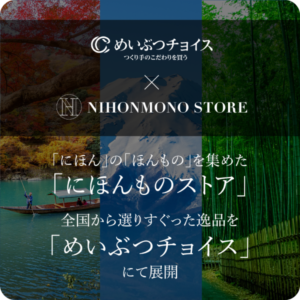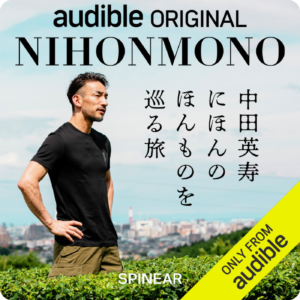Sanriku is one of the most famous fishing grounds in the world. The coastal area of Iwate Prefecture is known for its rias coastline, a complex network of bays, where scallop cultivation is thriving. Yamakiichi Shoten, located in Heita, Kamaishi City, sells “swimming scallops” so fresh you can hear the sound from inside the box. By delivering quality scallops, the company is enhancing the value of Sanriku.
Kamaishi, “City of Iron and Fish,” rich in Sanriku seafood
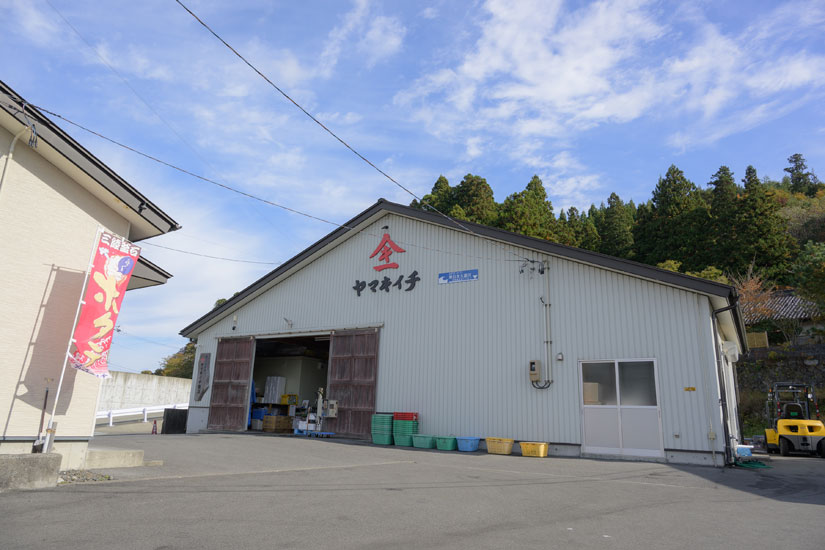
Kamaishi City, located in the southern coastal area of Iwate Prefecture, faces the Pacific Ocean to the east and is home to the rich marine resources of the Sanriku fishing grounds. As the birthplace of modern steel manufacturing, Kamaishi has prospered as a “city of iron and fish.
Yamakiichi Shoten is located near the Hirata fishing port in Kamaishi City. The company was founded in 1989. The company was founded in 1989 by Yukiteru Yukiteru, the father of Takeichi Kimigahara, the managing director and the president, with the aim of selling seafood from Sanriku. At first, they mainly sold wakame seaweed, but one day they were asked by the fishermen’s cooperative to sell scallops since they had a surplus of scallops due to their inability to establish a sales channel.
He started selling scallops when the fishermen’s cooperative asked him to sell them because they had a surplus of scallops without establishing a sales channel.
Iwate scallops fetch a high price.

The bay, which is made up of the intricate topography of the Rias coastline, has calm waves, making it ideal for scallop cultivation. For this reason, wakame seaweed, scallops, and oysters are actively cultivated in Sanriku.
While Sanriku boasts the second largest production of wakame seaweed and the fifth largest production of oysters in Japan, scallops are the only fish cultivated widely from Hokkaido in the north to Miyagi in the south, with Iwate scallops accounting for a mere 1 percent share of the total. Iwate scallops account for a mere one percent of the total.
Iwate’s scallops compete with Hokkaido in terms of production volume, but Iwate’s scallops compete in terms of quality. If Hokkaido is like a major sushi chain, Iwate’s role is different, like a restaurant,” Goichi says.
Iwate scallops fetch the highest prices in the market. Although the amount of scallops produced is small, the quality of the scallops is highly valued in the market.
Cultivation differs by production area

In many areas, Hokkaido scallops are cultivated using the “jimaki method,” in which young scallops are released into the sea and raised in a near-natural state on the ocean floor. On the other hand, in Sanriku, Iwate, the “ear-suspension method,” in which holes are drilled in the shells and the scallops are suspended by ropes, is the most common method of cultivation. The method of cultivation is different.
In the “ear-suspension method,” the young shellfish are released into the sea and grow by swimming around on the ocean floor. While the “ground-shelling method” uses the “surface” of the seafloor to raise the young, Sanriku Iwate’s “ear-suspension method” takes advantage of the deep water terrain of the inner bay, or “depth,” to raise them while they are floating in the water. Scallops raised by the “ear suspension method” do not come in contact with sand on the seafloor, so there is no need for them to spit sand. This is also an advantage of the “ear-suspension” method.
In addition, “ear-hanging” scallops are suspended by ropes, making them easy for fishermen to manage. Sanriku Iwate scallops are more concerned with size and quality than number. Since growth is affected by barnacles, seaweed, and other attachments to the shells, the fishermen are particular about cleaning the shells and raising and lowering the ropes to adjust the depth of the sea water flow to a good level.
It is also important to keep a proper distance between scallops in order to grow large scallops. The scallops are hung at predictable intervals to prevent them from growing too densely together. This is also done to prevent each rope from becoming too heavy. If the rope becomes too heavy and the float drops, it may reach the seafloor. If the rope is allowed to float in the water but sucks up sand on the seafloor, it is a waste of time and energy. Ear-suspension intervals, shell cleaning, and float management. These are also the particulars of the scallop fishermen of Sanriku Iwate.
While scallops from Hokkaido take three to five years to grow to the same size for shipping, scallops from Iwate can grow to the same size in two years. This is partly the result of the Sanriku fishing grounds, where the Oyashio and Kuroshio currents mix, and partly the benefit of the mountains, thanks to the nutrients from the humus that flows from the mountains. Hokkaido scallops are the same size but have thicker shells, while Iwate scallops are the same size but have thinner shells. Iwate scallops, on the other hand, are the same size but have thinner shells and larger scallops and meat.
Iwate scallops have thinner shells and larger meat, resulting in a higher yield. Yamakiichi Shoten’s “swimming scallops,” which are delivered alive, are trusted by restaurants in Tokyo for their freshness.
What are “swimming scallops”?
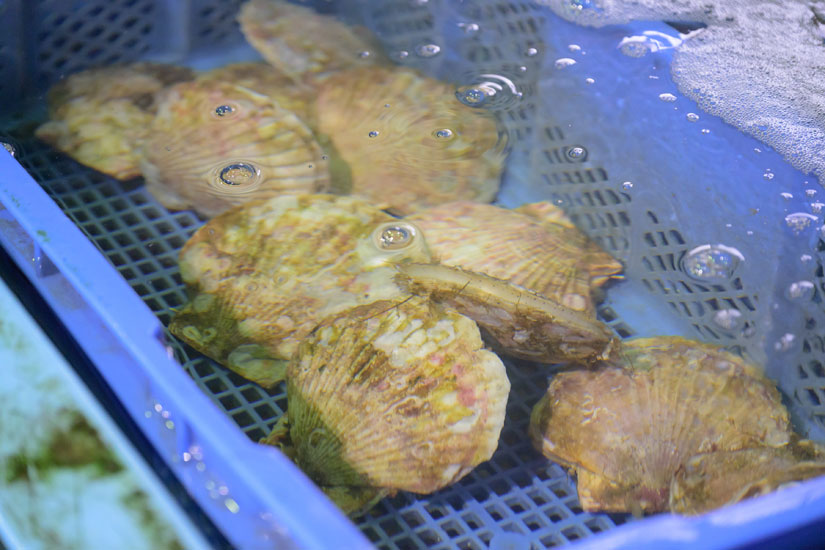
Recipients of Yamakiichi Shoten’s “swimming scallops” are surprised to see the scallops “swimming in the water” and the shells flapping open and closed. They even have to be careful not to get their fingers caught when peeling the shells. For this reason, the “swimming scallops” come with a peeling spatula and instructions.
You can order scallops in sizes of 11 cm or larger. The largest scallops can be as large as 15 cm or more, and there are even “phantom scallops” that can be ordered. In addition to their size, scallops swimming in the sea are thick and crisp.
The scallops’ scallops are also the muscles that open and close the shell. This is why scallops that are healthy enough to swim also have crisp scallops. If you actually peel off the shell, you will see the scallop moving and shaking.
Thick scallops and tasty strings
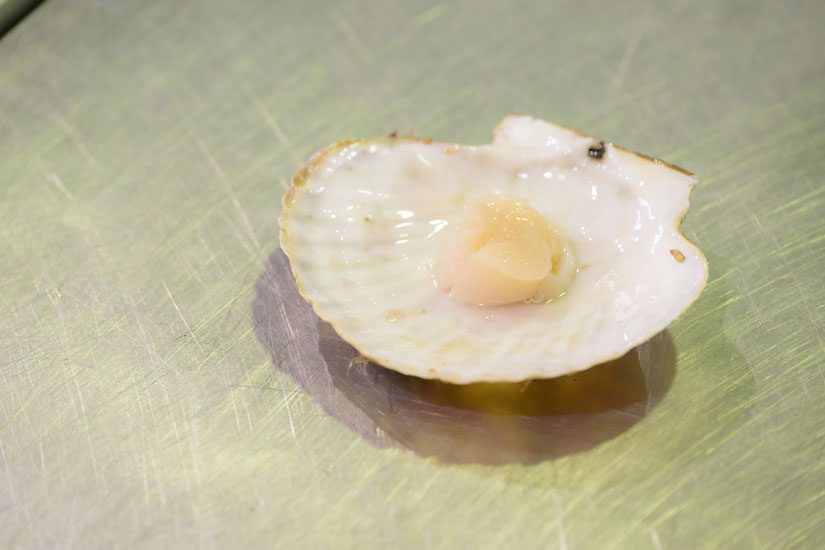
Yamakiichi Shoten delivers high quality scallops, carefully selecting scallops that satisfy customers in terms of size, taste, and freshness.
As a result, people who have only eaten scallops bought at the supermarket are surprised at the texture and rich taste. Some of them even say, “I didn’t know scallops could taste this good.
When people think of scallops, they tend to think only of the scallops, but with our scallops, the strings are sweet and delicious as well. Depending on the season, you can also taste the ovaries. If you work carefully, you will be appreciated. I believe that,” Goichi says.
What was commonplace in the scallop production area was “something special.
When Goichi’s father, Koki, started selling scallops, he went to Tsukiji for market research. There, he was astonished to see scallops being sold under the name “live scallops. The scallops he saw were completely different from the fresh scallops he had seen in Kamaishi, and they were very weak.
We had grown up seeing scallops freshly landed in the morning, so we took it for granted,” he said. But what was natural for scallops in Sanriku was ‘special’ elsewhere,” he recalls. We realized that Sanriku scallops were “something of value.
I want to deliver Sanriku’s valuable scallops fresh.

The president went through a trial and error process of transportation and shipping methods in order to deliver scallops fresh. At first, he loaded trucks with scallops that had just been landed, but some of them died before delivery. They were supposed to be fresh, but they were not. He realized that in order to maintain the freshness of the scallops, it was important to create the same environment as when the scallops were alive.
Scallops are only as good as the water they are landed in. Each scallop is cleaned, sorted, and created stress-free in the fish tank. Immediately after they are landed, scallops are in a state of excitement, so we make sure they rest in the fish tank for at least one day to create the same conditions as when they are in the ocean, and let them relax before shipping. In pursuit of freshness, Goichi has arrived at the “swimming scallops,” which are delivered alive.
The method is a trade secret, but the key is to “put yourself in the scallop’s shoes.
Overcoming the Great East Japan Earthquake
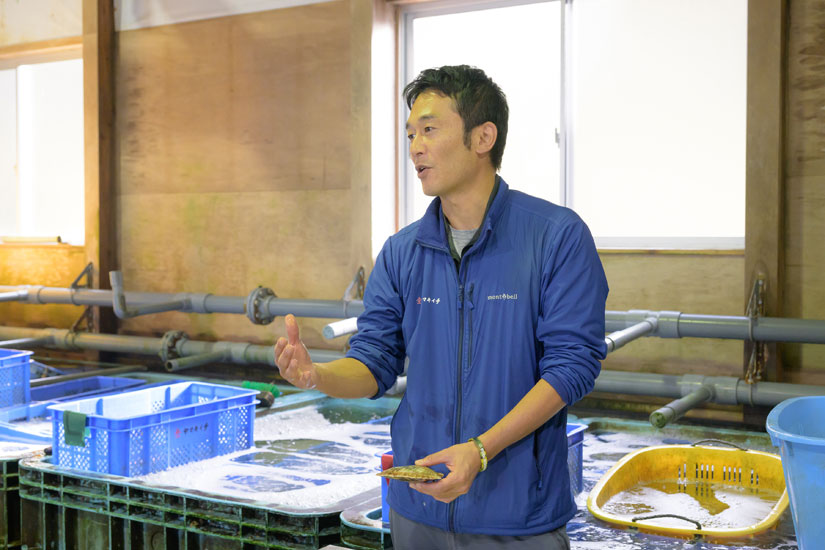
The “swimming scallops” spread throughout Japan by word of mouth because of their high quality. Then, in March 2011, the Great East Japan Earthquake hit. The Great East Japan Earthquake triggered a tsunami. Yamakiichi Shoten lost its office and fish tank.
The scallop fishermen who were close to Yamakiichi Shoten continued their production. Although Yamakiichi Shoten was able to continue doing business for a living even without the fish tank, Goichi said, “Our mission is to deliver good scallops from Sanriku. It is different to ask people to buy them as reconstruction assistance.” He sent letters to 30,000 customers and stopped shipping “swimming scallops” until the fish tank was rebuilt.
In July 2012, the fish tank was rebuilt and the “Swimming Scallops” were restored. Letters of encouragement and gratitude arrived from all over Japan.
We want to express our gratitude and convey the charm of the production area.
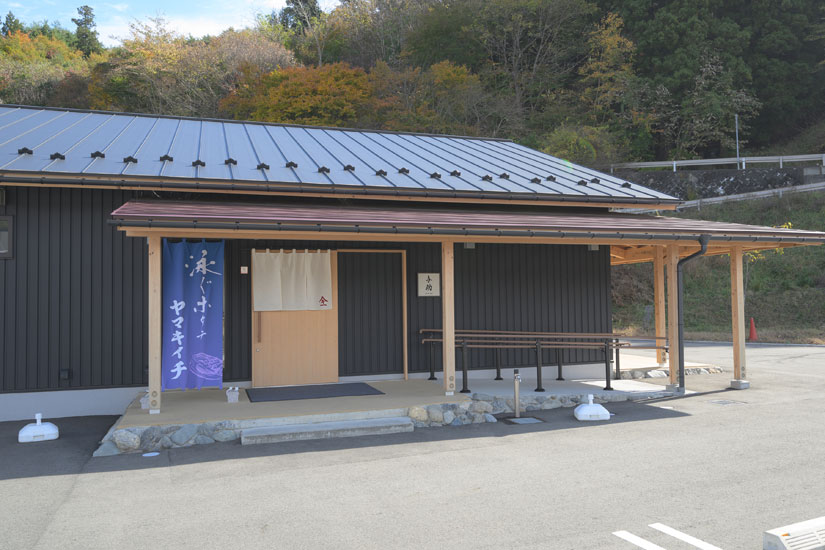
In 2020, he will open “Yosuke,” a restaurant with a direct sales shop. This is a place where people can taste “swimming scallops” while being close to the Sanriku Sea.
Because he has been delivering good scallops, he says, “Even after the earthquake, my customers never left and waited for me. I want to convey that gratitude. I also want to convey the charm of the scenery and people of the production area.
Enhancing the value of Sanriku and walking with Sanriku
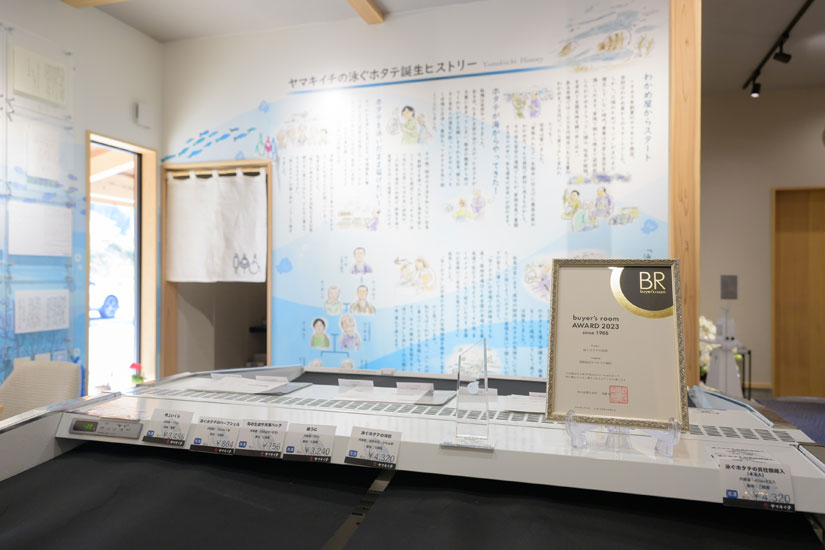
On the wall of the restaurant “Yosuke” is a history of Yamakiichi Shoten, letters of encouragement received from all over Japan after the earthquake, and messages about scallops swimming in the sea.
The history of Yamakiichi Shoten is also the history of the scallop fishermen of Miyako, Kamaishi, and Ofunato.
Swimming Scallops” won the Director-General’s Award of the Small and Medium Enterprise Agency.
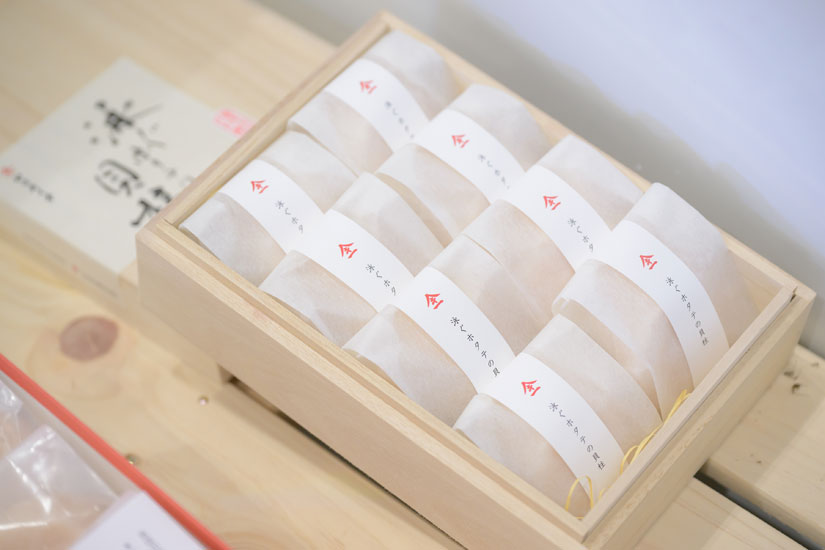
In 2023, “Swimming Scallops” won the Director-General’s Award of the Small and Medium Enterprise Agency in the “buyer’s room 2023.
The “Swimming Scallops” is a product made from scallops that are peeled and then flash-frozen. The scallops are large in size, rich in flavor, and plump in texture. The best quality is delivered in a paulownia wood box. Only 15% of the scallops used in this product are 45g in size. They are also very rare.
Sticking to Our Beliefs Even in Severe Circumstances

In recent years, global warming has caused sea water temperatures to rise in summer. The ocean environment, which used to be just right for scallops to live in, has changed drastically. As a result, some scallops do not survive the summer and die before being landed, leaving the aquaculture industry in a difficult situation. It is precisely because of this situation that Yamakiichi Shoten purchases at a high price the high-quality scallops that local producers grow with great care, thereby boosting the local industry.
Since my father’s generation, we have been striving to buy scallops at the highest price on the beach,” says Yamakiichi. Securing income for fishermen is important, but that alone will not last forever. I think it is also important to foster a sense of fulfillment and pride,” says Goichi. Sometimes, he would take the fishermen to restaurants that wholesale scallops in order to remind them of the deliciousness of the scallops he has raised. Today, the restaurant “Yosuke” plays a role in this process. The fishermen are rewarded when people who have tasted the “swimming scallops” at the restaurant tell others about their deliciousness and excitement, and spread the word about the scallops.
Even if the production volume decreases, we will continue to sell scallops one by one. Swimming scallops” are the very charm of Sanriku. That is why we want to deliver only the really good ones.
With this strong belief, the “Swimming Scallops” are released to the world. Their deliciousness is filled with the fisherman’s insatiable “persistence” and Yamakiichi Shoten’s desire for the development of the scallop industry in Sanriku.
